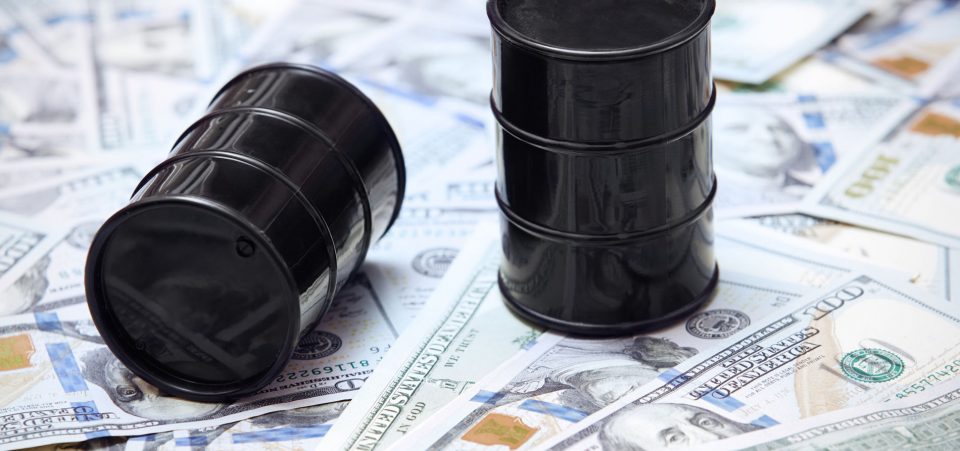Saudi Arabia Promises to NEVER Cut Production, Then Does
Oil prices rose at the end of November after the Organization of Petroleum Exporting Countries (OPEC) announced plans to cut oil production by 1.2 million barrels a day for the first half of 2017. But cash-strapped Saudi Arabia needed more pull. Oil prices jumped again on December 12 after several non-OPEC nations agreed to cut production by an additional 558,000 barrels a day. But will it be enough to refill the empty coffers of the bully of the Middle East?
Oil prices have been bullish since Donald Trump won the U.S. Presidential election on November 8. Since then, oil prices have climbed more than 16% to around $52.50 a barrel. Investors have embraced Trump’s pro-growth economic plans and believe they will translate into sustainable economic growth here at home.
America’s love for Trump aside, most of that increase has come since the end of November, when OPEC announced that it will reduce its daily output by 1.2 million barrels per day for six months, starting in January. The cut in production, the first one since 2008, is aimed at curbing the global oil gut that only happened because Saudi Arabia refused to cut production in 2014.
At the time, Saudi oil minister Ali al-Naimi said his country would, “continue to welcome additional production if customers come and ask for it.” Oddly enough, not many people were lining up for Saudi oil. Within six months, oil prices had plunged 50%, the sharpest drop in years. (Source: “Saudi Arabia: We’ll never cut oil production,” CNN, December 22, 2014.)
No worries, the cartel said, stating it would keep its crude output at 30 million barrels a day, arguing it didn’t even actually care about the price of oil. Instead, OPEC was more concerned about maintaining its market share no matter what.
Feeling quite secure in his country’s long-term ability to bring the U.S. shale industry to its knees, Ali al-Naimi also said that if other non-OPEC countries want to cut production, they could go ahead. But Saudi Arabia…Saudi Arabia was never going to cut production. “That position, we will hold forever, not just 2015.” (Source: Ibid.)
What a difference two years, empty government coffers, and a lack of relevancy can accomplish. In the days after announcing the cut, crude prices soared 15% to more than $52.00 per barrel.
New OPEC/Non-OPEC Cartel Tries to Push Prices Above $60.00
Saudi Arabia is, for the most part, a one-hit wonder; it gets three-quarters of its revenues from oil. And the country needs money. Lots of it.
Unfortunately for Saudi Arabia, it knows it needs the help of other non-OPEC nations to have any lasting impact on rising oil prices, mainly because OPEC is losing its relevancy.
On December 10, OPEC met with a group of non-OPEC producers in Vienna, Austria to get them to agree to cut production. In the end, the non-OPEC nations agreed to cut 558,000 barrels per day in 2017. This translates into a global reduction of roughly 1.75 million barrels per day and is equal to the expected demand growth in 2017 from China and India.
The non-OPEC countries that agreed to a cut in oil production were Russia, Kazakhstan, Azerbaijan, the Kingdom of Bahrain, Brunei Darussalam, Equatorial Guinea, Malaysia, Mexico, Oman, the Republic of Sudan, and the Republic of South Sudan–essentially, countries even more cash-strapped than Saudi Arabia.
While this new pact between OPEC and non-OPEC countries accounts for 60% of the world’s oil, it does not include major oil-producing countries like the United States, Canada, China, Norway, and Brazil.
The markets responded to the additional cut in oil production by sending crude prices to $54.51 on Monday, December 12, the highest level in 17 months. The price is well on its way to surpassing the $60.00-per-barrel mark by the end of the year. Again, not only does Saudi Arabia need cash to plug its fiscal hole, but it also needs oil prices to be much higher in anticipation of the 2018 IPO of its state-owned oil company, Saudi Aramco.
Major Headwinds to Keep Lid on Rising Oil Prices
Despite the short-term euphoria, there are some major headwinds facing oil prices. These headwinds will not prevent oil prices from a knee-jerk spike in the coming weeks, but they will impact oil prices as we head further into 2017.
First, rising oil prices could trigger a drilling boom in the U.S. shale industry, pumping additional oil into the market.
Second, U.S. crude inventories are at 485.8 million barrels; the highest seasonal level in more than 30 years. This, coupled with increased U.S. output, could keep a lid on soaring oil prices.
Third, for oil prices to stay high, you need demand. And the global economy remains weak.
Fourth, the 20% increase in oil prices over the last couple weeks has taken place before the reductions have even begun. Chances are good that the bullish sentiment will hit a ceiling in the coming weeks and/or be priced in once the production cuts take effect in 2017.
Lastly, greed (cheating) will not be good for the new OPEC/non-OPEC cartel. OPEC is notorious for underreporting its output. Meanwhile, non-OPEC countries like Russia have a history of either not cutting as much as promised or doing the complete opposite of what they promised.
This most recent effort to rebalance the oversupplied market will absolutely enjoy some temporary success. But long-term, the new cartel’s pact will fail, with oil prices hovering around $55.00 a barrel in the second half of 2017.






